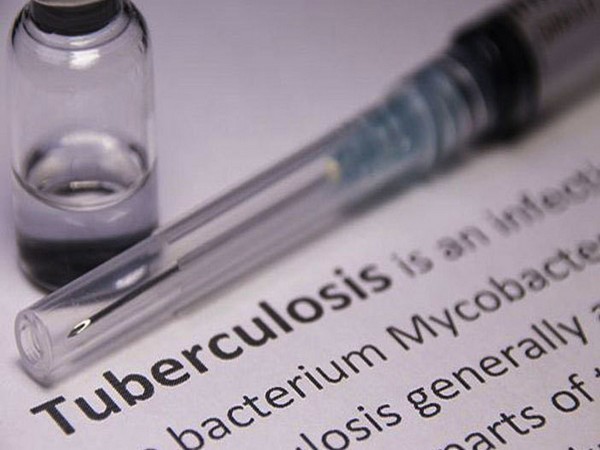SA launches real-time TB dashboard as part of intensified “End TB” campaign
According to the Minister, the tool is “an investment in the power of data to save lives. Our political will to end TB is very strong and unwavering.”

- Country:
- South Africa
The Dr Aaron Motsoaledi-led National Department of Health (NDoH) on Friday officially unveiled a new, near-live tuberculosis (TB) monitoring dashboard during a ceremony at the National Health Laboratory Service (NHLS) Head Office in Johannesburg, signalling a bold and data-driven step in the country's drive to combat one of its most persistent public-health threats.
Data meets disease control
The dashboard follows collaborative efforts between the NDoH, the National Institute for Communicable Diseases (NICD) and the NHLS, offering granular monitoring of TB testing, diagnosis and treatment across the nine provinces and multiple districts. According to the Minister, the tool is "an investment in the power of data to save lives. Our political will to end TB is very strong and unwavering." This digital platform enables stakeholders to view metrics by age, sex, geographic region and level of priority, allowing for rapid identification of gaps and underserved populations.
The burden and urgency
South Africa remains among the world's high-TB-burden countries. In 2023 alone, an estimated 270 000 new TB cases were recorded, and around 56 000 TB-related deaths occurred — averaging roughly 150 deaths per day. (health.gov.za) Minister Motsoaledi has emphasised that TB has killed more people than many of the headline diseases combined, yet remains under-emphasised in public discourse. (News24) The NDoH's national "End TB" campaign sets a bold target: to test five million people for TB, which modelling suggests could reduce new TB cases by 29 % and TB deaths by 41 % by 2035. (health.gov.za)
Key pillars of the strategy
-
Testing and diagnosis scale-up: The dashboard will support efforts to reach millions of people annually, including those without symptoms, close contacts of TB patients and individuals in high-risk settings.
-
Granular monitoring: By disaggregating data by province, district, age and sex, decision-makers can identify where testing or linkage to care is falling behind.
-
Integration with HIV response: Given that TB remains the leading cause of death among people living with HIV in South Africa, the campaign is tightly linked with the national HIV response. (sundayworld.co.za)
-
Vaccine preparedness and innovation: Motsoaledi reaffirmed the country's readiness for next-generation TB vaccines, noting that several candidates are in late-stage trials and that South Africa is gearing up for rollout preparedness. (Government of South Africa)
-
Addressing structural drivers: The Minister also tied the campaign to long-standing challenges such as the legacy of gold-mining and silica-dust exposure that have contributed to high TB rates in mining communities. (News24)
What the dashboard means for stakeholders
For health-system managers, the new dashboard represents a real-time tool to evaluate progress and redirect resources where needed. For clinicians and civil-society actors, it offers transparency and accountability on testing coverage, outcome metrics and demographic reach. For the public, it signals that TB is no longer operating in the shadows. By enabling rapid detection of underserved age bands or regions (for example men who tend to test less than women), the dashboard helps target interventions more equitably. Past campaigns revealed that around 65 % of testers are women, while men represent only about 30 % — a disparity the new system aims to close. (TimesLIVE)
Challenges and the road ahead
While the dashboard is a powerful tool, the Minister is clear that technology alone is insufficient. The underlying tasks remain formidable: closing the gap in undiagnosed TB (estimated at some 66 000 cases in South Africa in 2022) (health.gov.za) ; ensuring prompt linkage to care; tackling drug-resistant TB; and addressing the social determinants of TB — poverty, overcrowding, malnutrition and weak ventilation. As Motsoaledi himself noted, "TB doesn't make noise. And that's the problem we're faced with." (South African News) Furthermore, vaccine deployment remains a future-looking pillar: although the BCG vaccine has been used for decades, there is no widely deployed adult TB vaccine yet. The country is preparing for rollout readiness with supply-chain, regulatory, financing and community-engagement plans. (South African News)
With the launch of this near-real-time TB dashboard and its integration into the "End TB" campaign, South Africa is signalling a sharpened, data-driven phase of its TB response. The challenge remains vast, but the combination of scale-up in testing, monitoring transparency, integration with HIV services, and forward-looking vaccine readiness offers a renewed pathway. If effectively implemented, it could usher in meaningful progress toward reducing both TB incidence and mortality by 2035. The success of the initiative will depend on sustained political will, partner coordination, resource mobilisation and community engagement. As Minister Motsoaledi stated, "Our political will to end TB is very strong and unwavering."
ALSO READ
-
Thrilling Women's Cricket World Cup Semi-Finals Set: England vs South Africa and India vs Australia
-
Captain Salman Leads New-Look Pakistan in T20I Showdown Against South Africa
-
Bavuma's Return: South Africa Gears Up for India Tests
-
Temba Bavuma Returns to Lead South Africa in India Test Series
-
Injury Sidelines Shreyas Iyer, Puts South Africa ODIs in Doubt









